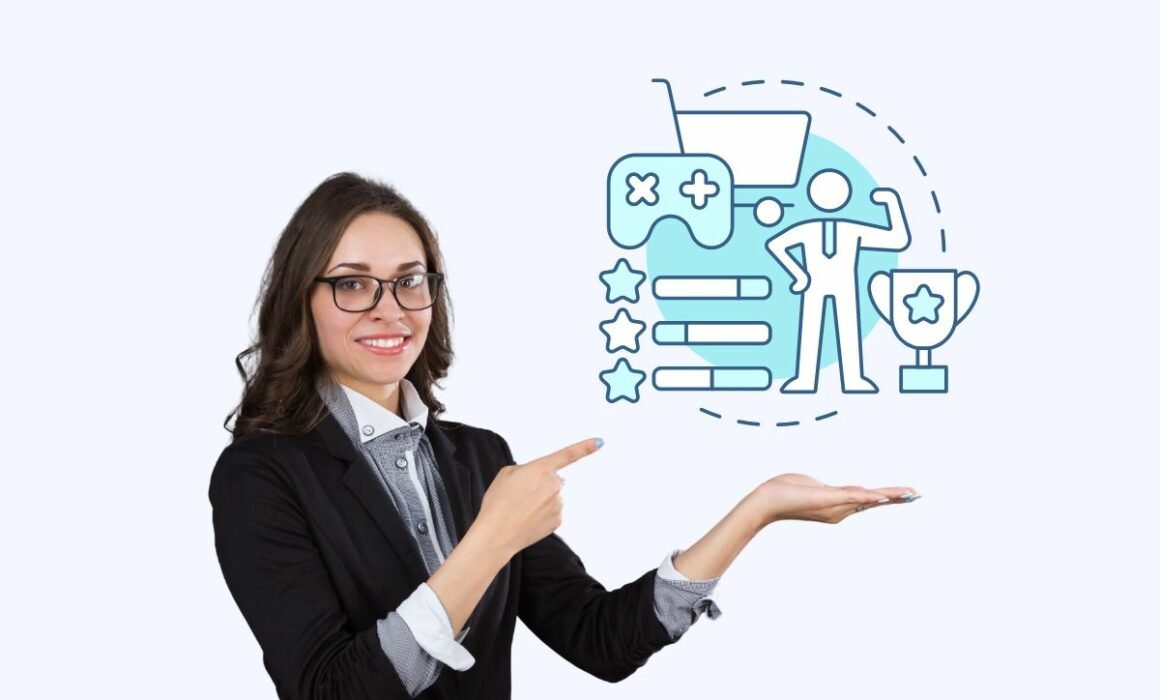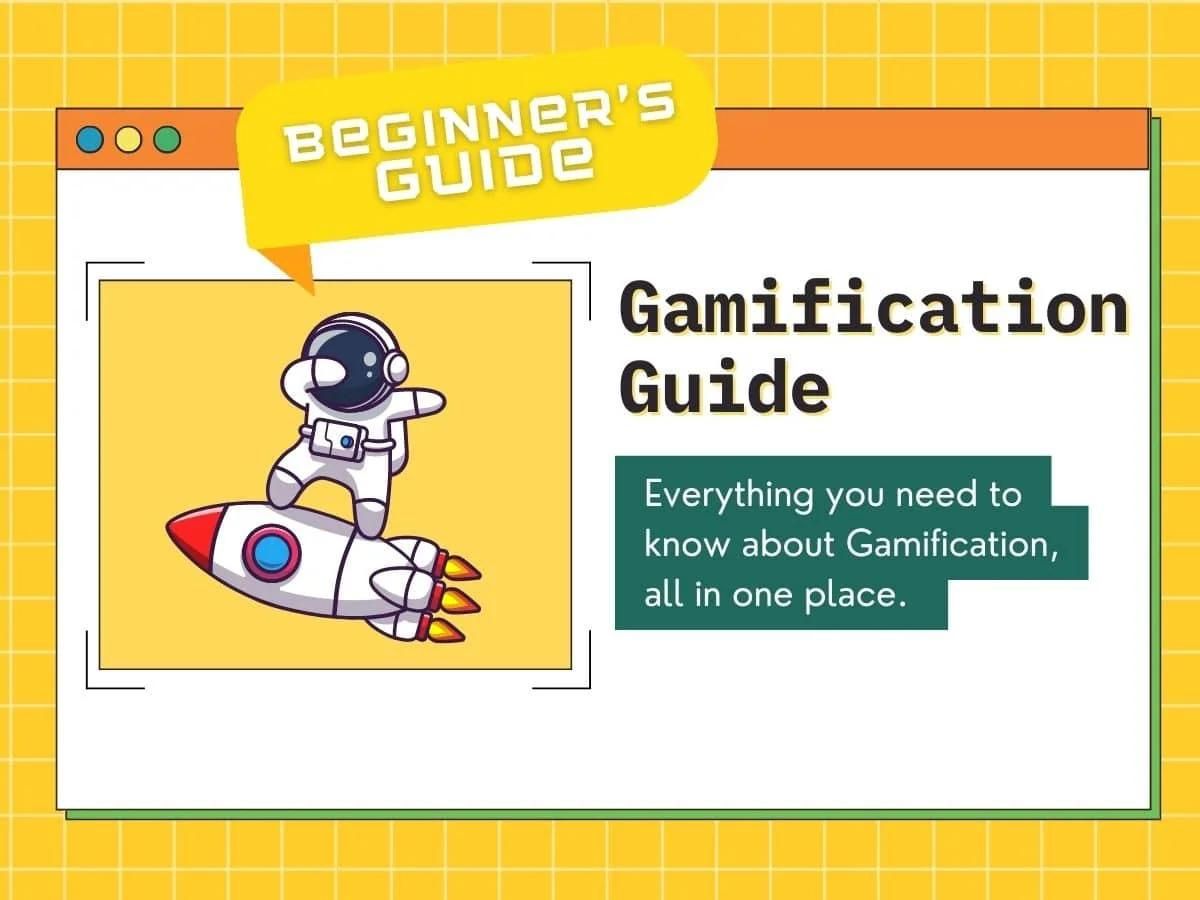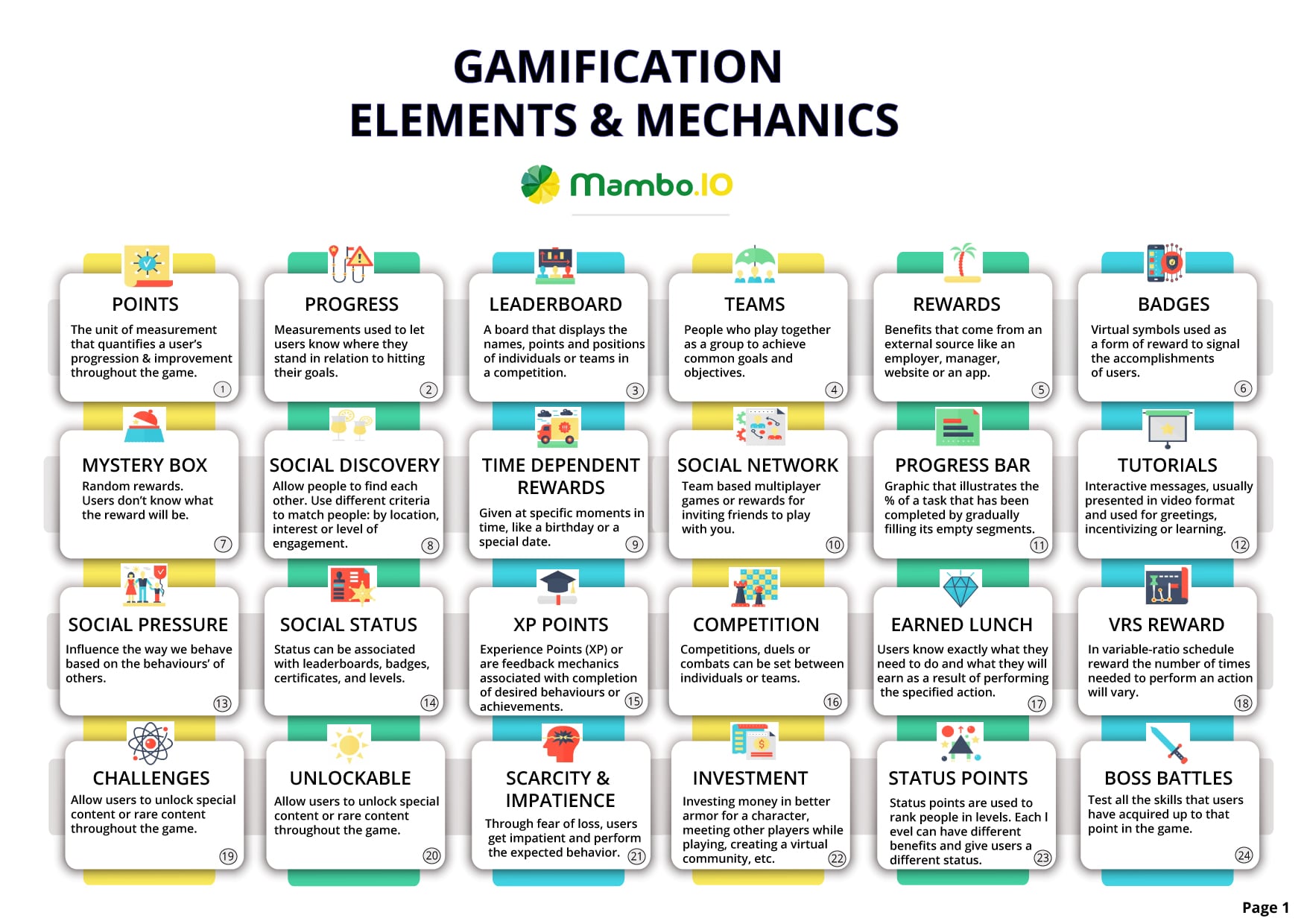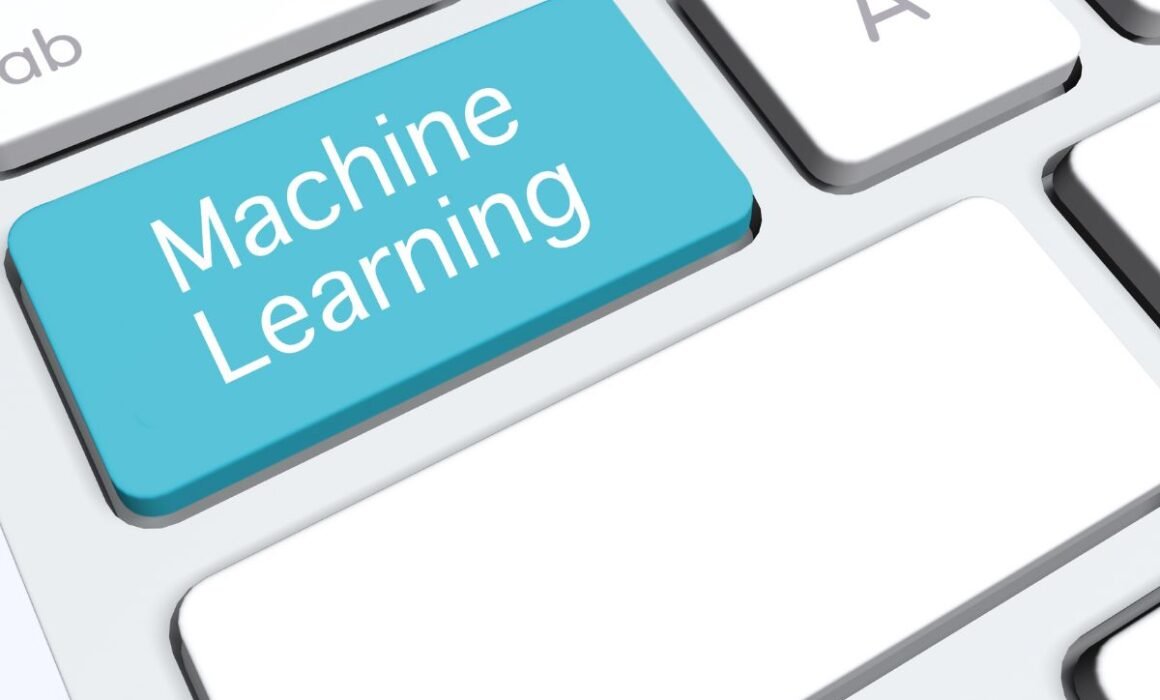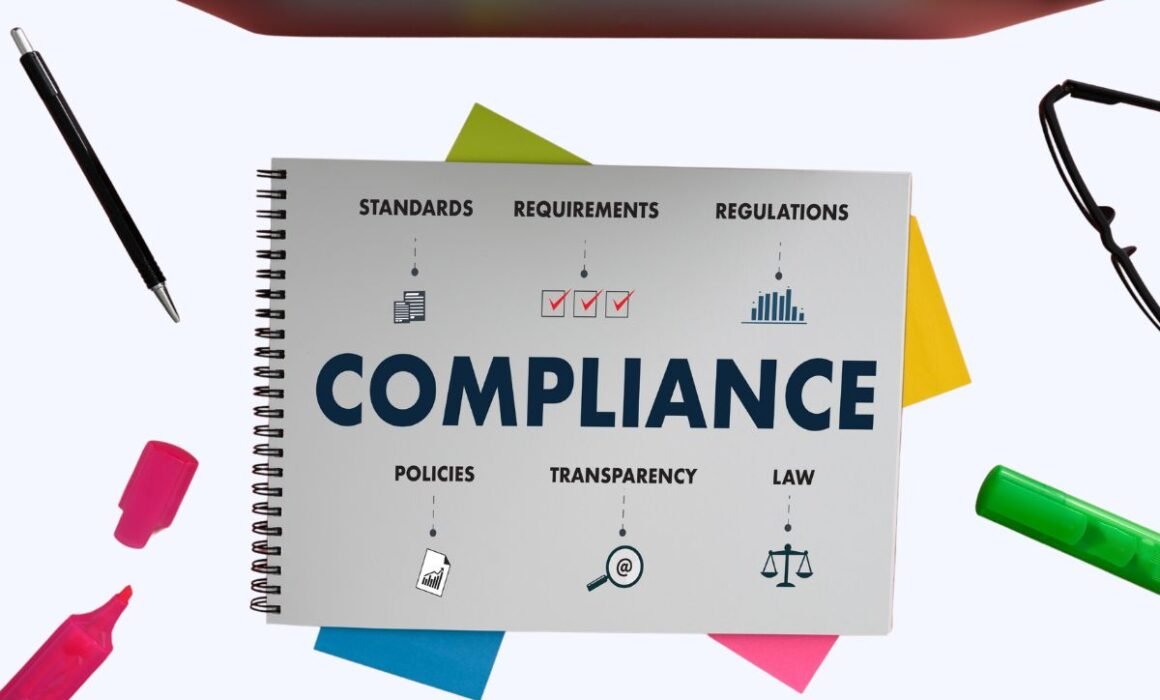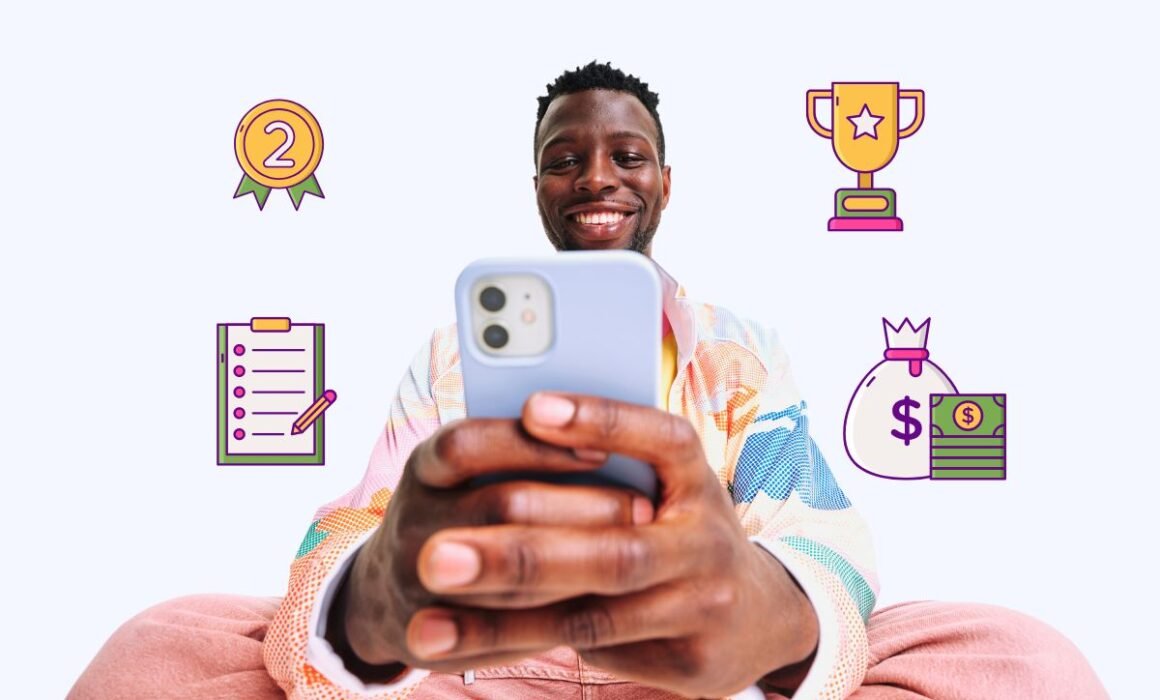Using Gamification in Business to Increase Performance
There was a time when gamification in business used to be a buzzword. But times have changed, and this strategic approach is becoming a potent tool for businesses. Companies nowadays are fighting tooth and nail to keep their employees sharp and their customers happy.
The brightest managers are turning to modern tools like gamification to engage employees and customers and carve out market share. Once you do this, your business will stand out in the crowd of poorly optimised businesses.
Table of Contents
Why should you care about gamification now?
Here’s an eye-opening stat from The Guardian:
Randstad UK, a popular recruitment firm, surveyed around 6,000 workers. Out of all of them, 60% of them were confident they’d move to a new role in the next few months. Not only that, 24% of them intend to make their next move in the next three to six months!
Normally, about 11% of people feel this way. This means the stakes are higher for businesses than ever. You have to swallow this hard pill: more than half of your team might be looking for greener pastures elsewhere.
How gamification can help businesses
So, what should a manager do in such trying times? You may have the following questions in mind:
- How would you boost your team’s performance and ensure they feel part of the business?
- How do you entice your customers to return for more of your offerings?
- What kind of software can you use to get this ball rolling?
The answer to all of these questions is pretty simple: gamification in business.
What is gamification in the first place?
Gamification may sound like a complicated corporate mumbo jumbo used by businesses who want to step up their game. But at its core, gamification is really a simple concept. This strategic approach adds psychological triggers into websites, apps, processes, or online communities to make them more engaging and appealing.
Gamification has evolved from a buzzword to a cornerstone strategy in customer engagement and employee performance.
Why do you think so?
It’s because gamification leverages basic human desires—the love for games and competitions and the individual’s thirst for achievement.
Gamification works by leveraging basic human desires
Games have always been one of the best ways to entertain oneself throughout history. Tabletop gamers nowadays even play with the same dice format used by Romans!
In medieval times, knights queued up in the joust before roaring crowds. Today, wildly competitive online multiplayer games like DOTA 2 fill arenas as they battle for K/D supremacy. This shows how competition is deeply embedded in every human’s psyche. Applying a competitive element to your product, workplace, or service just increases our rudimentary and primal connection to it.
We crave the feeling of being rewarded, socialised, accomplished, and more. Games are just one of the few effective ways to achieve that feeling of self-expression and status we humans crave.
The benefits of gamification are more than just fun and games
Gamification just takes that innate desire to prove oneself, complete, or socialise and turns it into a new system. It can make practice fun. It can also make the process less droll.
More importantly, it can ensure things are done to spec without the need for dull checklists. And over time, people build skills in whatever games they play. They build knowledge even by being supporters (ask any football fan).
As a result, we improve at doing our jobs. Not only that, we feel more connected to the work we’re assigned to accomplish. Most of these have to do with dopamine, a brain chemical that boosts our mood. It helps us focus and keeps us motivated despite challenges.
Download your free
“Gamification Guide”
Get your PDF now and start transforming your approach to digital engagement!
When applied correctly, gamification in business can significantly increase profit and engagement. Numerous companies have found success using gamification, and your business can be next.
Where do we find employee-focused gamification in business?
Gamification has become a powerful tool in business, mainly where employee engagement and development are crucial. Let’s explore how this strategy is being used to enhance learning and training.
#1. Learning & training
Gamification is a big deal in business, especially when it comes to teaching and training staff. Today, we have a diverse workforce, making it more difficult for companies to find a one-size-fits-all to engage everyone.
This is one of the best situations where gamification shines the brightest.
This strategy uses the universal appeal of games to catch the interests of your employees. The key is to offer rewards that really matter to them, like social recognition, special statuses, financial bonuses, and more. When you find out what works best for your team, the better.
With gamification in business, you can design a learning system that focuses on the skills and knowledge your team needs. Doing so can guarantee that they’re engaged while simultaneously improving the areas that matters most to your business.
How gamification elevates corporate learning
Gamification in corporate learning for employee-facing applications is largely used to:
- Keep skills up to standard.
- Improve overall knowledge.
- Boost motivation.
- Improve data retention.
- Encourage self-directed learning.
- Grow team skills.
- Track and measure activities and behaviours.
- Improve comfort with problem-solving.
- Incentivise performance at the top.
- Help those who are underperforming.
- Give immediate feedback.
Gamification in business, particularly in learning and training, is revolutionising how companies develop their workforce. The more they use this strategic approach, the more enjoyable and fruitful their process becomes for everyone involved.
If you want to learn more about how it works, we recommend you check this out: Gamification in Business for Learning & Training.
#2. Employee engagement
While engagement has improved slightly in the last decade, it remains below 15%. This means the vast majority of your employees do not care about their jobs, which is costing companies between $450 and $500 billion. Disengagement also comes with a host of management problems, such as absenteeism, poor work attitude, low work quality, and more.
This impacts the performance of your other employees and can result in a loss of customers, too. (Customers like happy workers.) Over time, poor employee engagement erodes your bottom line.
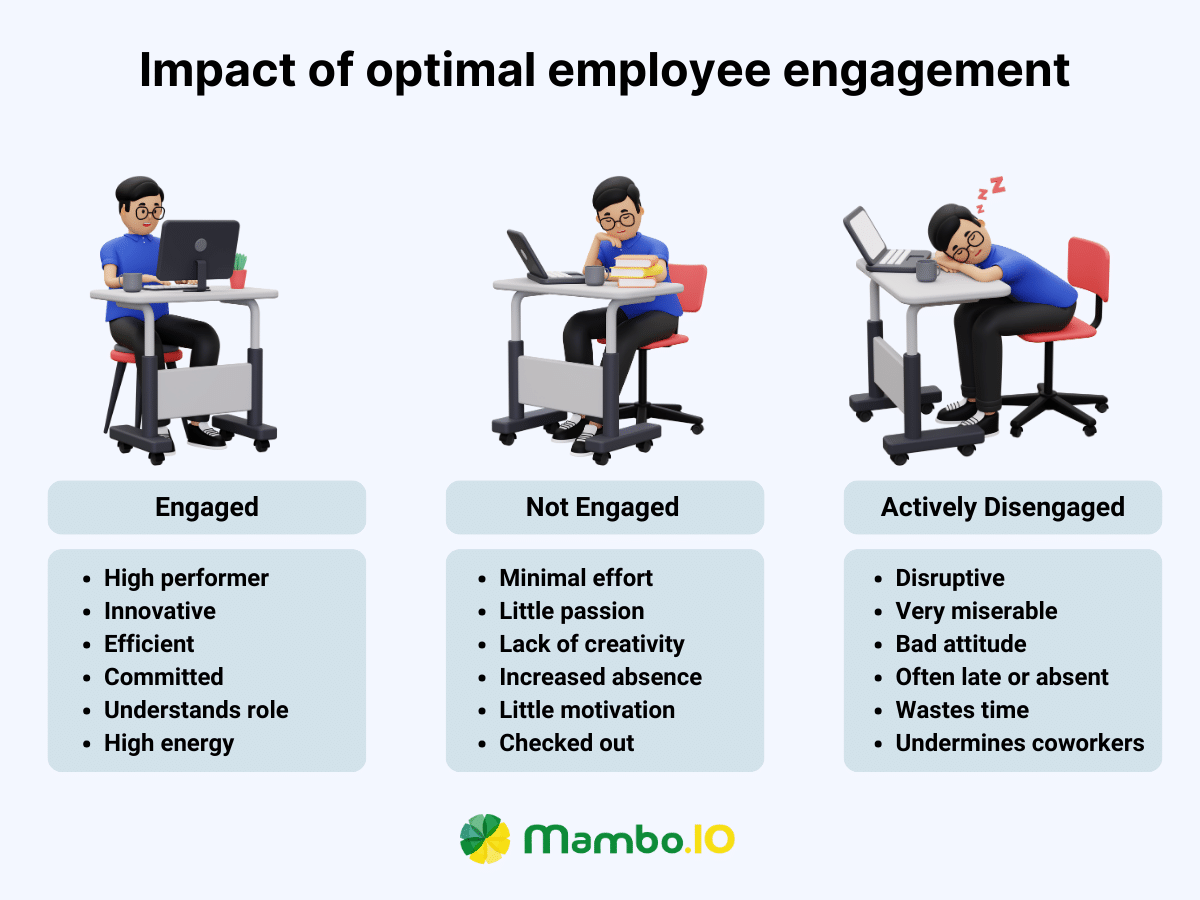
Gamification in business works because it helps everyone see how their work matters. It creates a fun way to make those connections. It also helps teams push further than they thought possible through extrinsic and/or intrinsic motivators.
Through games, you’ll trigger expected behaviours that lead to customer retention and acquisition, less disengagement, and better overall job satisfaction.
#3. Real-Time Performance
Imagine you have a chronic disease like diabetes. What would make you feel more comfortable – yearly checkups or hourly monitoring?
The more frequent one, right? And that makes sense.
Our health is a crucial part of our lives. But so are our jobs. However, we rarely get access to the same quality of regular reporting that we’d see in the medical space. Why is that? The root of this discrepancy typically boils down to poor management practices.
Frequent, quality feedback is essential for employee growth and satisfaction, just like regular monitoring is important in managing your health. Workplaces must adopt a more attentive and supportive approach so their employees feel valued and supported. This is pretty much like how patients manage their chronic diseases with constant care.
A manager sets objectives, organises, motivates and communicates, sets yardsticks, and measures to develop people. – Peter Drucker
Using gamification to develop a high-performing team
To develop a great team, you need to know the goal and track your progress against it. The more often you measure, the more you’ll notice trends. When you see a situation developing, you can act quickly to take corrective action or pull resources to create an opportunity. That’s what a doctor would do if they saw your condition change.
Bizarrely, gamification in business can actually be a fun way to make that happen. We’ve created an infographic about how gamification can help develop a high-performing team. You should check it out!
How does gamification in business drive better workplace performance?
Gamification in business improves results by encouraging the type of activity and data collection needed to make decisions.
You can loop contact centre agents, IT departments, resellers and sales teams into a network of games. Then, you can collect and collate information about how work is progressing in real time. And that gives your management team real, actionable data on who is meeting, exceeding or falling behind on targets.
This allows them to allocate their time and resources (just like a doctor would) to where they are needed most. Incentives keep that data rolling in by providing a reason to engage – status, cash, gifts, or recognition.
Download your free
“108 Gamification Elements and Mechanics”
Get your cheat sheet and have a quick reference at your fingertips!
#4. Contact centres
Do you think yelling at your call centre team about subpar First Call Resolution or Average Handling Time stats will help? Perhaps there’s a better way to get the results you want.
Maybe there’s some proactive action you can take to improve customer satisfaction.
You need to find a way to engage our primordial brains so you get the performance increases you want in a way that doesn’t FEEL like work. Gamification is one way to do that.
Why should you be using gamification in your contact centre?
When stats start to slip, there are usually a few common causes. Call centres are stressful places, and there’s often little time to make up for a poor culture before it becomes embedded.
Gamification helps call centres improve their:
Morale
When every minute counts, some people can feel left out. Favouritism can grow, and unfairness can flourish. Because of this, people can become despondent and lose sight of the goal.
With gamification, you set the goals. You bring the enforcement into a place of automation, not manager power. And through that, you create a natural sense of fairness.
Performance
What the senior team cares about and what floor managers monitor can sometimes become disjointed. With gamification, you send the KPIs from the top and report on what matters. Your agents can easily see and understand what you’re asking them to do and how it will positively impact them when performance targets are met.
Engagement
With a sea of contact centre agents, it’s easy for your team members to feel like a number. How can they stand out for the right reasons?
Gamification works to provide challenges they understand and a sense of gratification when they achieve them. That’s reinforced by rewards they care about, so they do it again and again.
Transparency
No one likes a moving goalpost. With gamification in business, you can set the goals and publicly stick to them. That provides a sense of fairness and transparency your team really needs to give their best.
Support
We know that teaching new skills with games can be fun for everyone, which is great. But what about the team members who don’t get it right away?
Well, that’s where support comes in. Through gamification, you develop your team by putting management in the right place at the right time to help everyone grow.
Value
Human resources only become valuable if they have the skills needed to perform well. Gamification helps to build skills so that your agent pool becomes better at what you need them to do. That creates real human capital.
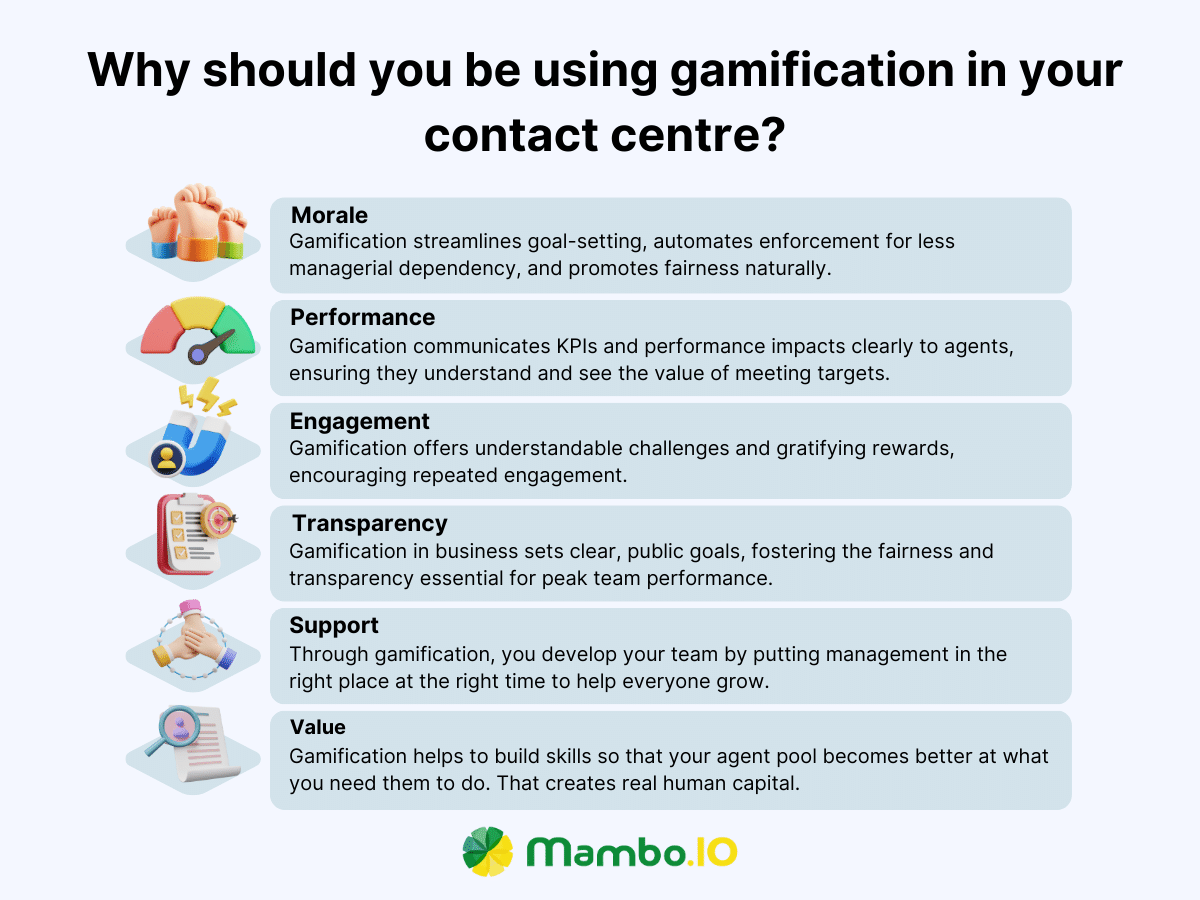
Ready to level up? Check out our infographic on gamification in call centres and see the game-changing benefits!
Are you curious about gamifying your contact centre? Read our guide to learn how to make work more fun and effective!
#5. Sales
Do you want more sales? Do you need your business development team, agent pool, and customer reps to drive spend? If you’ve done everything you can but still can’t get desirable results, you need to ask yourself this important question:
“Do you have a good team environment, or is your workplace toxic?”
You may think you’re doing your best as a manager by handling all the necessary tasks well. But if you’re not managing your team culture correctly, you might poison your profits with poor management.
Signs of a toxic working environment
According to iHire’s 5th Annual Talent Retention Report in 2023, around 35.7% of employees left their jobs because of a toxic work environment. Other predominant reasons are lack of recognition, poor manager/supervisor relations, and more.
The signs below are some of the most common reasons why a working environment can be classified as “toxic”:
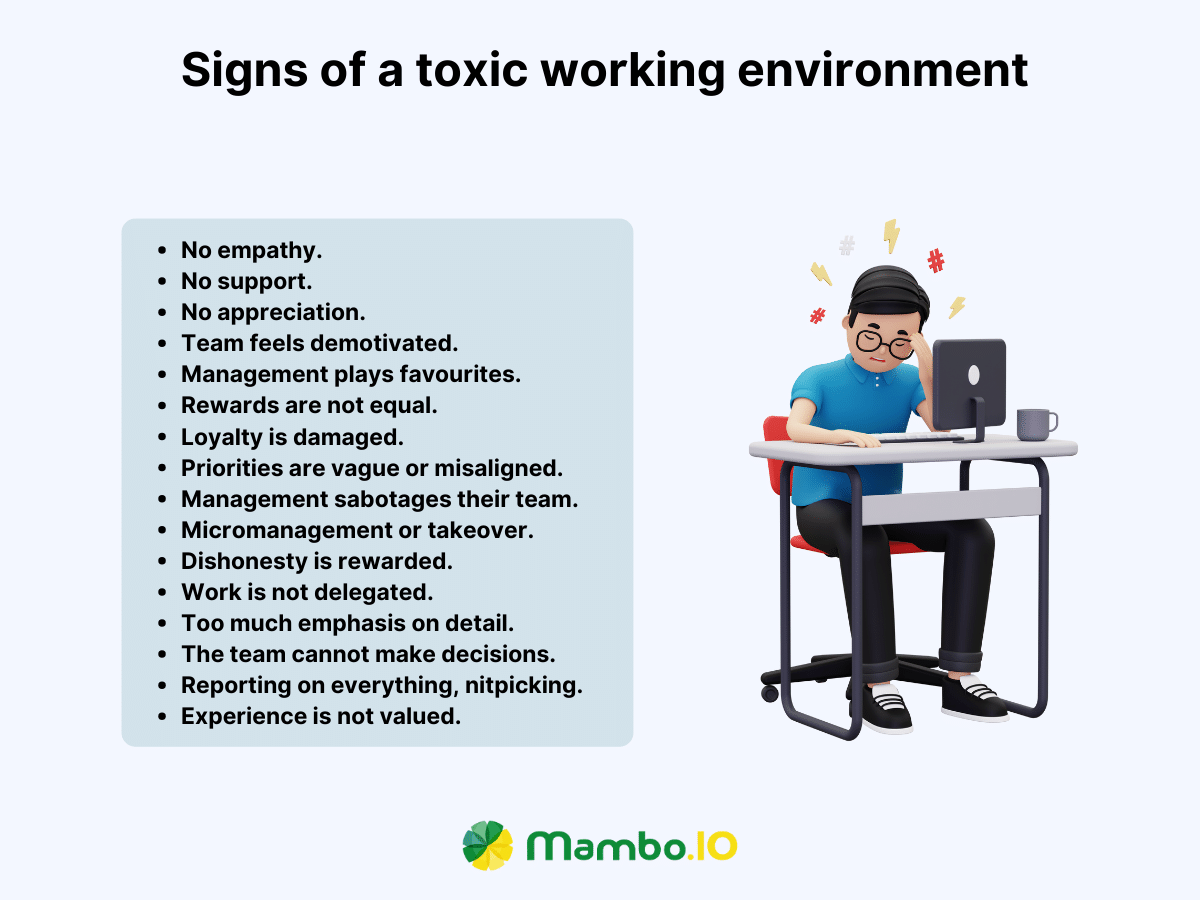
- No empathy.
- No support.
- No appreciation.
- Team feels demotivated.
- Management plays favourites.
- Rewards are not equal.
- Loyalty is damaged.
- Priorities are vague or misaligned.
- Management sabotages their team.
- Micromanagement or takeover.
- Dishonesty is rewarded.
- Work is not delegated.
- Too much emphasis on detail.
- The team cannot make decisions.
- Reporting on everything, nitpicking.
- Experience is not valued.
How can gamification help your sales team?
By providing clear goals, measurement, and reporting frequency, you inevitably improve transparency in your workplace. This prevents mistrust and favouritism from flourishing.
When this happens, management can skip minor details and micromanage and focus on helping team members who need it.
All this can happen while rewarding the team’s top performers in the ways they care about. If you follow this approach, your employees will see more fairness in management, increasing their job satisfaction in the long run.
#6. Development teams
If you work in IT, you know what they have to juggle simultaneously to get a project off the ground. Successful collaboration requires clear goals, record-keeping, and discipline, but getting off track is easy.
What are the common problems in IT departments?
IT departments typically find themselves dealing with more than what they can chew. People would think that the problem they face can easily be solved by proper management. But let’s get a grip here: there’s more to these problems than meets the eye. Sometimes, it takes more than strict management techniques to solve these issues.
Below are some of the often commonly unlooked issues IT folks have to deal with:
- Team goals aren’t properly communicated, which often lead to demotivation.
- No one is sure on what direction to move in or how they perform.
- There’s no one looking after the quality and time management.
- Managers don’t know what to look for and focus on silly metrics.
- The daily work is repetitive and soulless.
How is gamification used for development teams?
Great project management with a strong leader is key to a smooth IT project rollout. Smart leaders use gamification to connect the work they want to be done (and when) and people doing that work. They also set KPIs that are agreed upon in advance. More importantly, they use gamification in business to create challenges for the IT team, which reinforces those KPIs.
These KPIs can be things like project stages, response rate, QA, or other project elements. This allows them to keep an eye on what matters and focus on correcting lagging projects and issues before they become roadblocks.
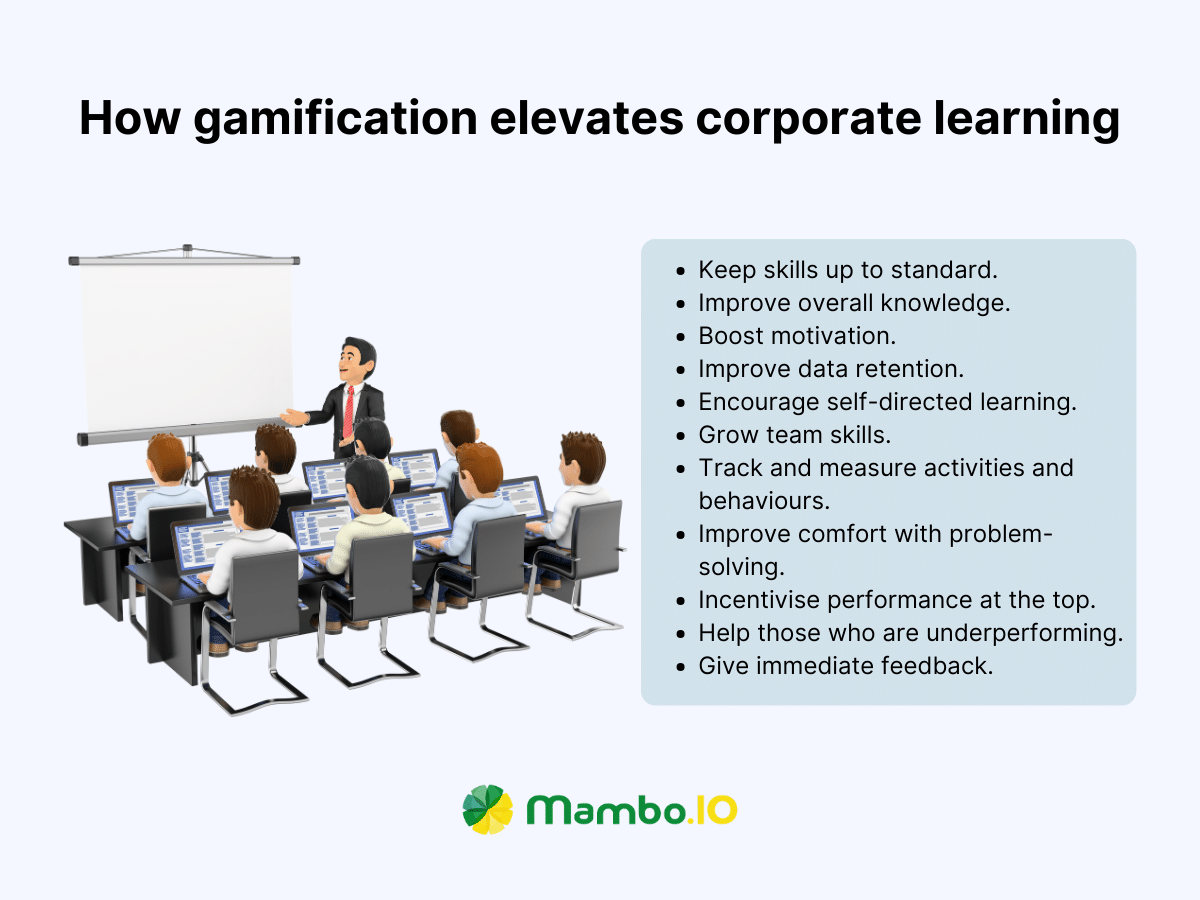
Have you ever wondered about what are the characteristics of high performance teams? Check out this infographic for more information: Gamification in Software Development Infographic.
You can also learn more about how development teams can significantly benefit from gamification here: Gamification in Development Teams.
#7. Onboarding & development
According to Forbes, an employee should know what a successful employee does in your organisation from day one. To do this, you must find model employees to mentor and speak with the new team members. They will show the team what success looks like at your company.
Another way to foster this culture of performance is to set short-term goals for your new hires. Meet and review them, then offer actionable feedback on what areas they excel at and don’t perform well in.
You might be thinking: “Why should I care about this? I can easily replace them!” Realistically, you can, but did you know that replacing an employee will cost you 1.5 to 2x their annual salary? Doing so will be counterproductive.
How is gamification used in onboarding and development?
When used for orientation, gamification supports new hires by standardising the process, ensuring complete training and automating that program (largely).
It ensures that the critical information is delivered in an engaging way and provides a trackable record of their learning. That means your team can support those who need it and invest their time in soft-skill like rapport building.
To learn how to engage new hires to accelerate productivity and performance, check out Employee Development With Gamification.
#8. Remote Work
The past few years paved the way to a massive exodus of employees opting for remote work. Because of this, we’ve also seen more companies transition to fully remote or adopt a hybrid working setup. As for the new startups, most of them have opted for a completely remote workforce.
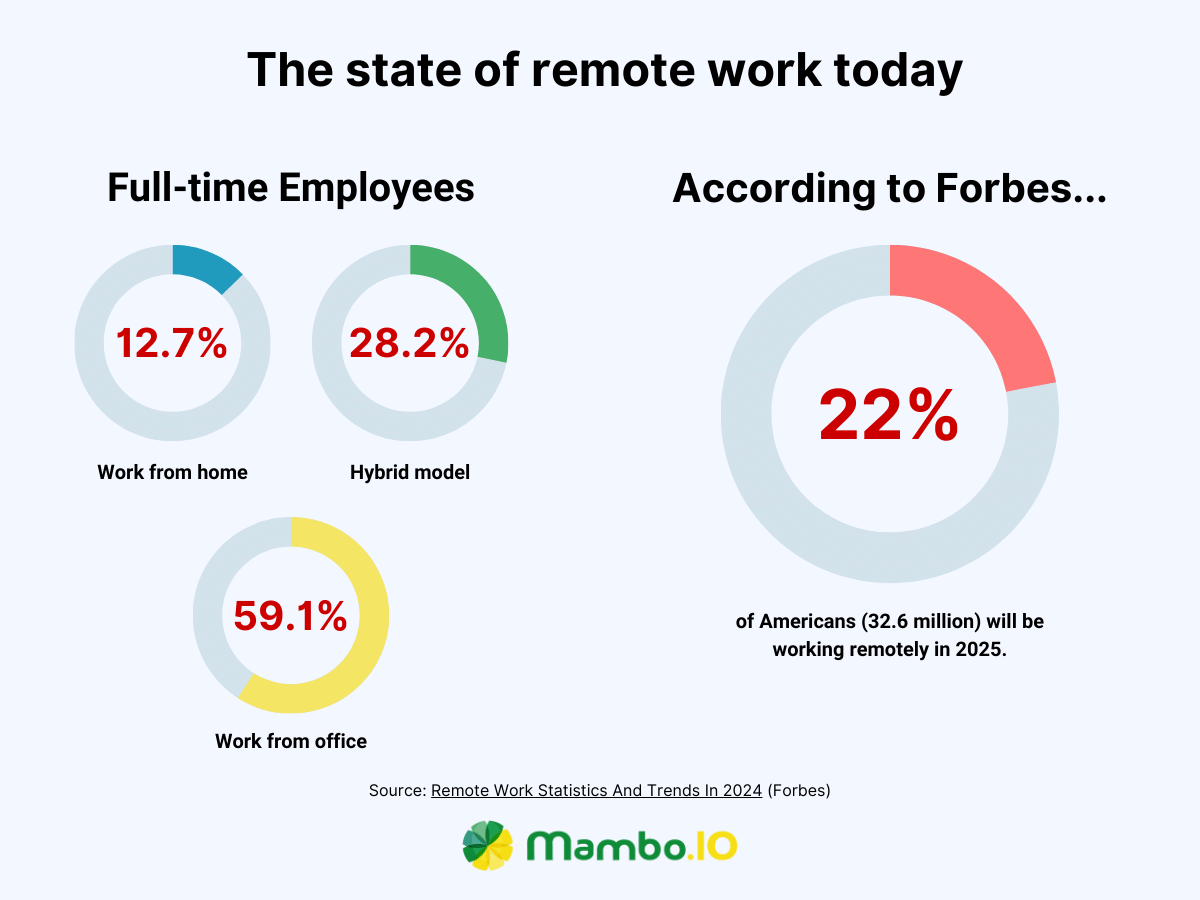
What are the problems with remote work?
According to Findstack, the three biggest challenges associated with remote work are the following:
- Unplugging after work (22%)
- Loneliness (19%)
- Communication and collaboration (17%)
And, unless you live alone, you’re bound to be interrupted by distractions more often than in the office.
That’s why many employers turn to computer logging software to manage their fears about productivity in a remote workforce. But that can compound disengagement when it’s seen as spying.
What is the best solution for disengaged remote workers?
Gamification in business can solve these issues for both employees and managers. With this approach, organisations can provide a connection to the social aspect of work that transcends personal location.
More importantly, they can help you remember to unplug for a healthy work-life balance when the day is over. They foster communication and work within teams with measurable and trackable goals. They can also track productivity without using some of the creepy methods you might otherwise use to manage remote teams.
Where do we find consumer-facing Gamification in business?
#1. Online Community Engagement
Online communities are where your customers gather and talk about common interests. But if you’re not seeing any back and forth, chances are your community lacks social buy-in. It might be missing loyalty, benefits, knowledge, general info, two-way chat, uniqueness, or interest.
So, how do you turn customers into fans? Gamification is the choice of big names like Airbnb, Starbucks, Google and more when dealing with these issues.
How is gamification used in online community engagement?
Gamification is used in community engagement because it increases:
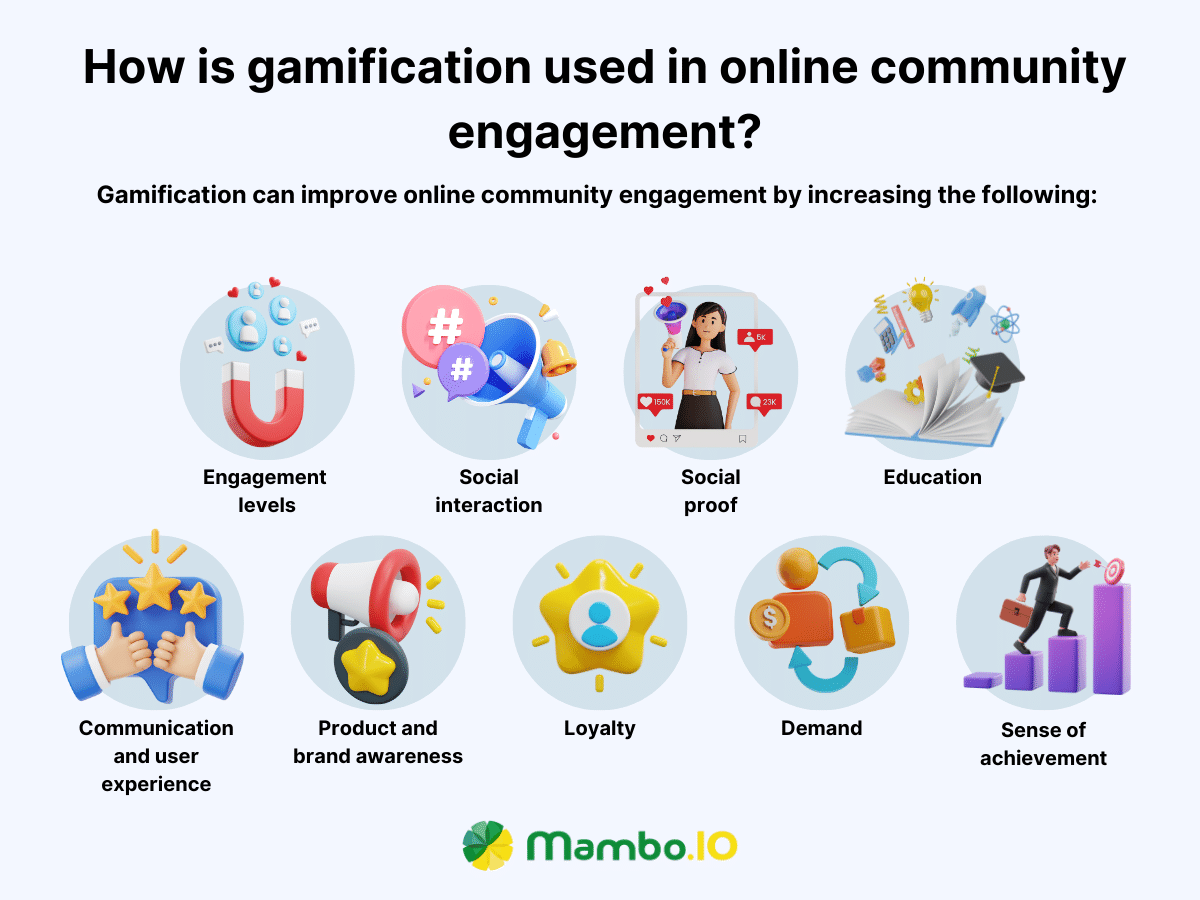
- Engagement Levels – It rewards customers for doing what you want them to do with coupons, status or perks.
- Social Interaction – It provides healthy competition as people see how they compare and can discuss and share.
- Social Proof – It links our personal life with the brand through social media and stimulates herd behaviour.
- Education – It helps people learn how to use the product or service better and share tips.
- Communication and User Experience – It helps the company learn what they’re doing right (or wrong.)
- Product and Brand Awareness – It helps spread the word as users advocate for the brand online and in person.
- Loyalty – It encourages repeat purchases and rewards loyalty through incentives.
- Demand – It creates scarcity and drives up demand.
- Sense of Achievement – It provides feel-good chemicals when something new is unlocked.
Examples of gamification in online communities

Source: MakeUseOf
Reddit is one of the biggest online communities today. Here, you can share news and chat about almost anything. Your posts and comments can earn karma points depending on whether Redditors like (upvote) or dislike (downvote) them. Your total karma score shows how much the community values your contributions.
Aside from the karma system, Reddit also allows its members to show appreciation for each other’s posts and comments by giving them awards. You can buy “Reddit Coins” and use them to buy these awards for fellow Redditors. Giving someone an award makes their post or comment stand out for everyone to see. Not only that, recipients also receive cool bonuses and special perks.
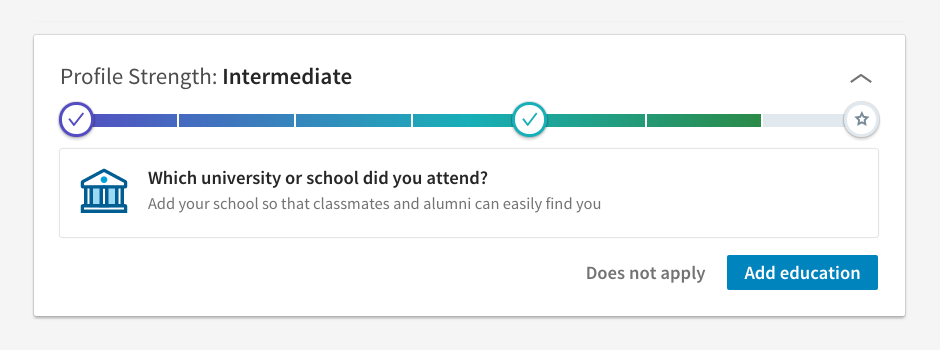
Source: LinkedIn
LinkedIn is a professional social media platform where people hang out to network with each other.
They’ve made profile creation fun by adding progress bars and a “profile strength” metre. The progress bar fills up as you add more details to your profile, like a photo or your skills. This clever use of gamification keeps users coming back to complete their profiles. In doing so, LinkedIn creates a deeper sense of belonging to the platform.
Twitch
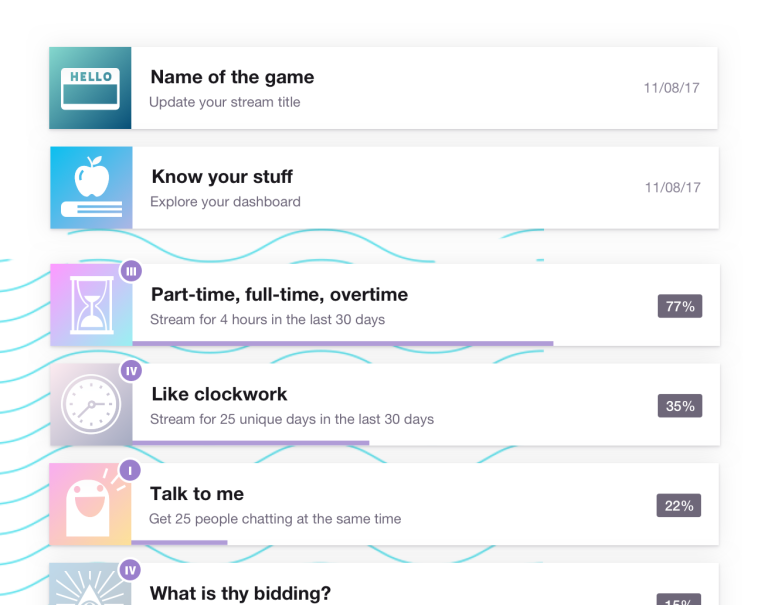
Source: LoyaltyRewardCo
Try asking any gamer about their top pick for a streaming platform, and they’ll most likely point to one place: Twitch. It’s so huge that it has garnered over 140 million users as of 2024!
This streaming platform uses gamification by incorporating game-like elements to make their streamers and viewers feel valued. We’re talking about elements like achievements, chat badges, leaderboards, and more. Viewers can earn badges, while streamers are motivated to stream and work towards joining the affiliate or partner program. This gamified approach makes it a win-win situation for everyone involved.
Online communities tend to grow more when integrated with gamification. If you want to learn how to do so, check this out: Community Gamification.
#2. Customer Service
No one joins a customer-facing department to give poor service. But despite your best efforts, problems can sometimes creep in. Such situations can look like this:
- Failure to meet obligations – customers don’t get a solution, or it takes too long.
- Lack of professionalism – customers notice agents are unhappy or the customer is misled to achieve sales commissions.
- Lack of concentration – contact centre agents are in a rush, so they don’t provide the right information or get enough into it to provide a solution.
- Unavailability – there are not enough agents available to help customers.
- Lack of empathy – customers feel the contact centre agents don’t understand their perspective.
How does Gamification in Customer Service benefit clients?
Gamification for customer service can provide an engaging way to prevent service problems. By triggering rewards against key metrics, agents remain available, professional, concentrated, empathic and solution-focused.
If there is a performance gap, gamification can provide an avenue for fun training and upskilling. When used in the CS department, gamification can lead to happier employees focused on delivering timely support to your customers.
#3. Sales
Did you know that 77% of people call some items by popular brand names? Wouldn’t you want your product to be the next Coke, Kleenex or Q-tip? The key to this is largely brand recognition. The more people encounter your brand, the higher the chances that they’ll remember it.
This mere exposure effect is critical to launching sales initiatives in new markets or territories. To achieve this effect, you must find a way to break through the noise and memorably reach your customers.
How does gamification in sales benefit customers?
With gamification, customers can learn about your product from something more engaging than an advertisement.
Gamification works on your potential targets like it does in your team – it encourages action. So, if you want your website targets to buy, gamification can:
- Educate – using games and interventions to train your clients about what your brand does.
- Engage – provide offers, discounts and incentives to try the project or interact with the brand and its community more deeply.
- Listen – get feedback from visitors even before they become paying customers so you can make changes to attract more customers.
Do you want to learn more about how you can use gamification in retail businesses? Check this out: Gamification in Retail
#4. Education & Training
Findstack says the eLearning industry has skyrocketed to 900% since 2000. That makes this digital form of learning and training near-ubiquitous. And with all the market competition, it’s hard to know if you’re doing it correctly.
What does successful online learning look like? And what areas does digital training let our customers and team members down?
- Lack of Communication – Learners aren’t told when they’ve completed a module, so it feels endless.
- Inability to Report Success – There’s no link between the learning and the behaviours you want from clients and employees.
- It’s Just Boring – The content is dry, and the narrative is nonexistent.
How does gamification in education and training benefit consumers?
Gamification in business helps with education and training by providing a fun, engaging place to build skills and behaviours. It similarly works on team members, managers and customers by pulling emotional levers and injecting fun into the experience.
- Dynamic – Interactions are different each time, and the outcomes for success are surprising.
- Fun – Tedious tasks are enhanced with milestones, graphical media and more.
- Analysis – Learnings are gathered following team or client completion or abandonment of the gamified lessons.
- Cost – It’s a cost-effective way to deliver learning at a large scale with high adoption.
Do you want to learn the advantages of incorporating gamification in business learning? If so, check this infographic out: Gamification in Learning.
#5. Custom App
Nowadays, 21% of users stop using an app after just one try. This is an improvement from 2015 when 25% of users would use an app once and then never again. However, it’s concerning that one in five users still give up on an app after only one session. There’s clearly more work to be done to prevent users from abandoning your app before they truly understand its value.
Some reasons for this is that the apps have a bad user experience, and have a poor user interface. If your users don’t like how your app looks or performs, they will not return. A dull, cluttered, clunky app will get uninstalled at the first opportunity.
How gamification in apps is used to help user engagement
Are you familiar with the Duolingo, FitBit or CodeAcademy GO apps? Not only are they veritable household names, but they do gamification in business very well. They’ve integrated gamification into their apps excellently that they’ve made their customers love their products the more they use them.
With this in mind, let’s explore what techniques they apply and how their apps work to drive user engagement.
Duolingo – 500 million users.
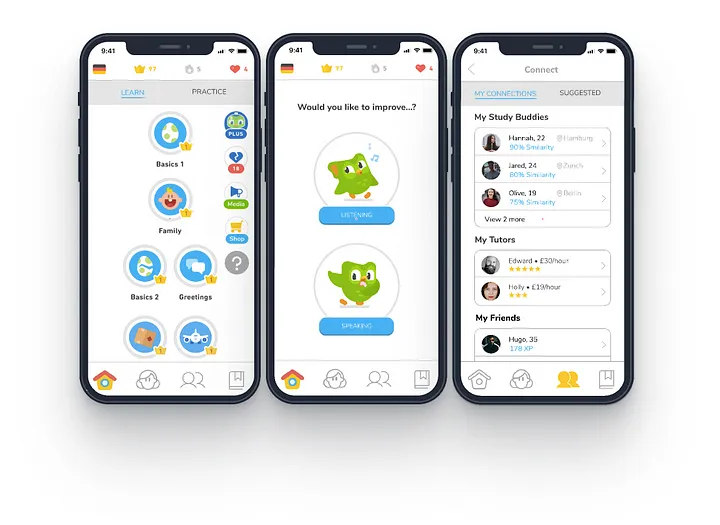
Source: Eliza Edwards, Medium
- Reward – Users get lingots when they complete lessons.
- Leader Boards – Users can compare their work with friends for social proof.
- Point & Level System – Users level up when they are active on the app and complete lessons.
- Badges – Users get badges when they achieve milestones.
Fitbit – 31 million users.
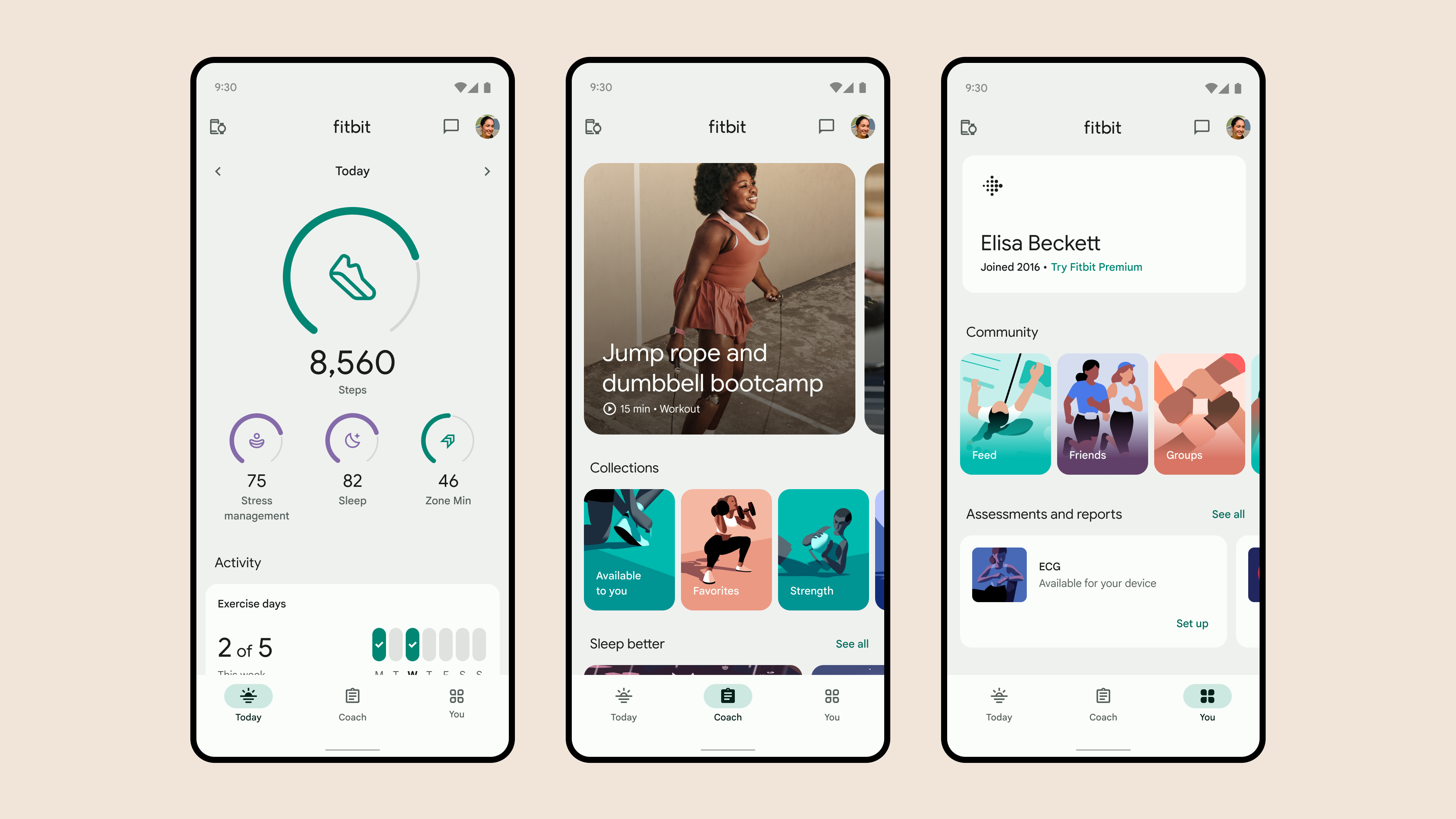
Source: Fitbit Community
- Badges – When users hit special milestones, they get a public badge.
- Social Engagement – Users can link their social media to join real-life challenges.
- Virtual Tour – Users can virtually ‘walk’ a city, which provides an exciting way to get fit.
CodeAcademy GO – 45 million users.
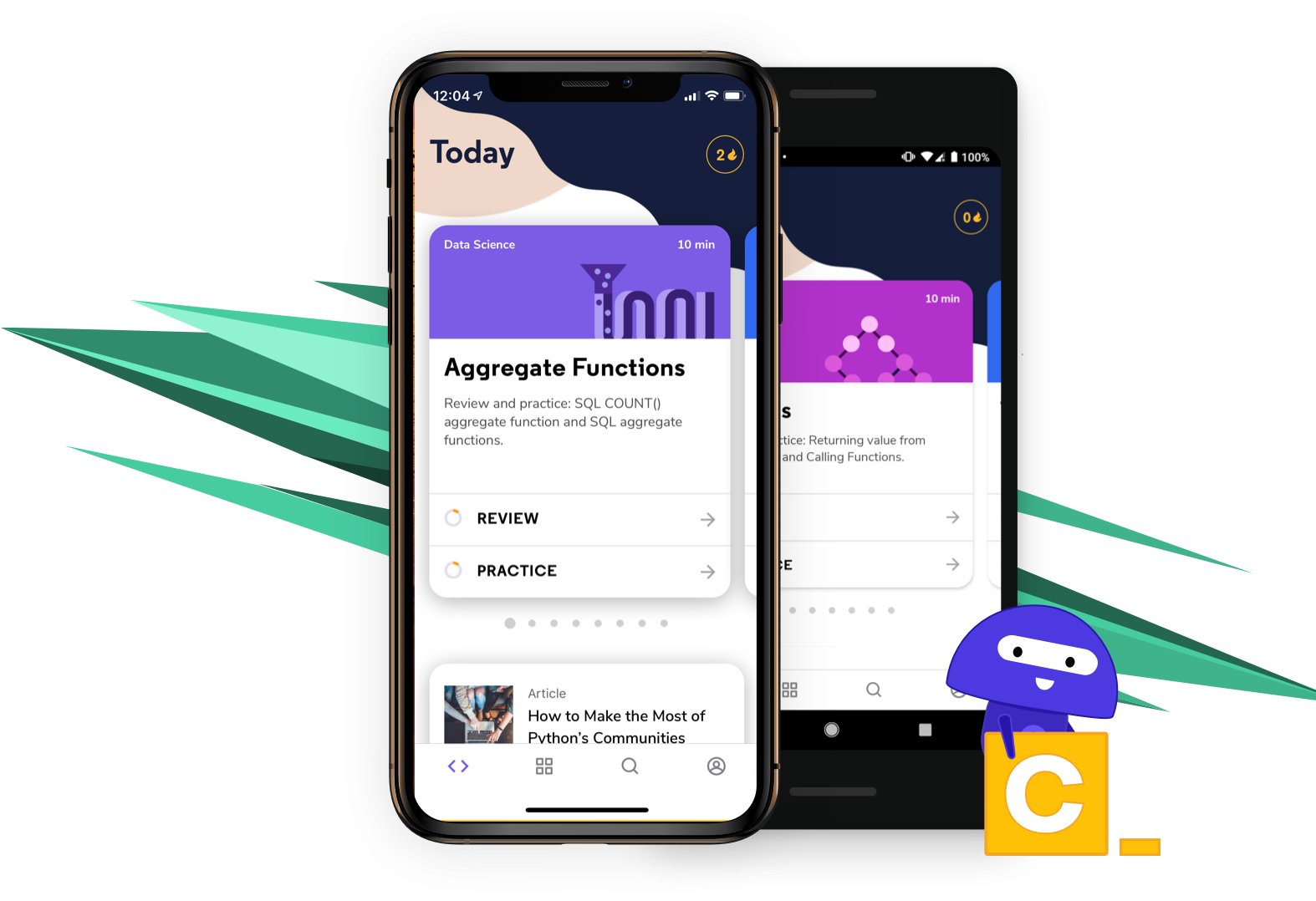
Source: Codecademy
- Badges – Users get badges when they complete skills and courses.
- Progress – Users can see what they’ve done and what’s to come.
- Points – Users get points when they complete an exercise.
Starbucks – 500.000+ users.
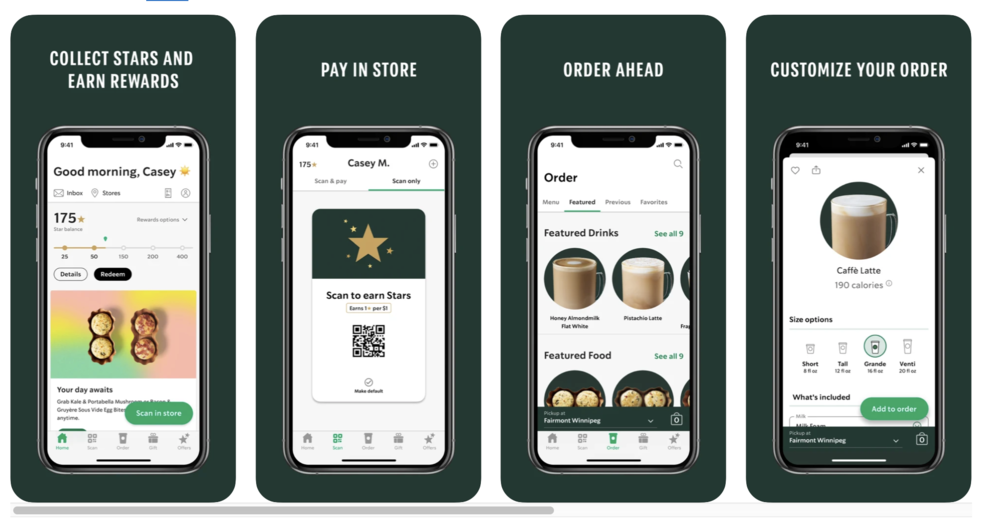
Starbucks – Indigo9Digital
- Points – Gain 2 stars for every 1 dollar spent.
- Loss Aversion – Don’t miss their double-star day.
- Reward – You can exchange stars for benefits like free brewed coffee & tea. Or get a birthday treat.
Fitocracy- 12,500,000 users.
[youtube controls=2]https://www.youtube.com/watch?v=GhdrYVsmpHs [/youtube]
- Points & Level System – Earn points either for completing a workout or Fitocracy assessment. When you accumulate x amount of points, you level up.
- Achievements/ Rewards – Receive badges for achievements. For example, running your first 5km or cycling certain milestone distances.
- Quests – Similar to achievements, but generally with multiple tasks. For example, “try three different shoulder exercises within seven days” or “century push: perform 100 push ups in as few sets as possible.”
- Challenges – Basically, it works like a competition, but on a larger scale. You can create challenges with other groups.
- Competition & Leader Board – Start a competition with another member. During the duel, you can check both performance and results.
The secret sauce for a successful app
The recipe for a hit app is quite straightforward: If your mobile app is captivating, fun, and interactive, your audience is going to adore it.
This not only boosts user involvement but also, by adding game-like elements to your app, you’re likely to see a spike in how devoted your users are to your brand. Ultimately, they’ll turn into the most enthusiastic promoters of what you’re offering.
But how can you harness this success? Once you gamify your app, you can apply as many psychological hooks as necessary to entertain, encourage, and excite your users. If you want to see how to make people engage and interact with your app, we recommend you check out Custom App Gamification.
#6. Customer Loyalty
It makes sense to keep your customers. In fact, it costs 5x as much to win new business. But many companies don’t have the right level of focus on customer loyalty.
There are quite a few reasons why you may experience fewer returning customers. Often, it’s low engagement, low brand awareness, lack of knowledge, or even poor customer experience. Customer loyalty is one of the areas where gamification in business performs well, and we’re here to show you how.
How does gamification benefit consumers?
Gamification in business can boost customer loyalty by:
- Higher levels of engagement – It can provide more touchpoints with your brand and affirm the behaviours you want.
- Learning – It can teach your customers about your products/services and how to use them.
- Measure customer retention and satisfaction – It can track where the quick wins are so you can target them.
- Training – It can guarantee your team is up to speed and providing good service.
The importance of loyal customers in business
Loyal customers refer more people and bring in more business. They will also buy other products and services from you. Additionally, it will cost more time and money to acquire new business than to build upon an existing relationship.
As the saying goes: Make new customers but keep the old. One is silver, the other gold.
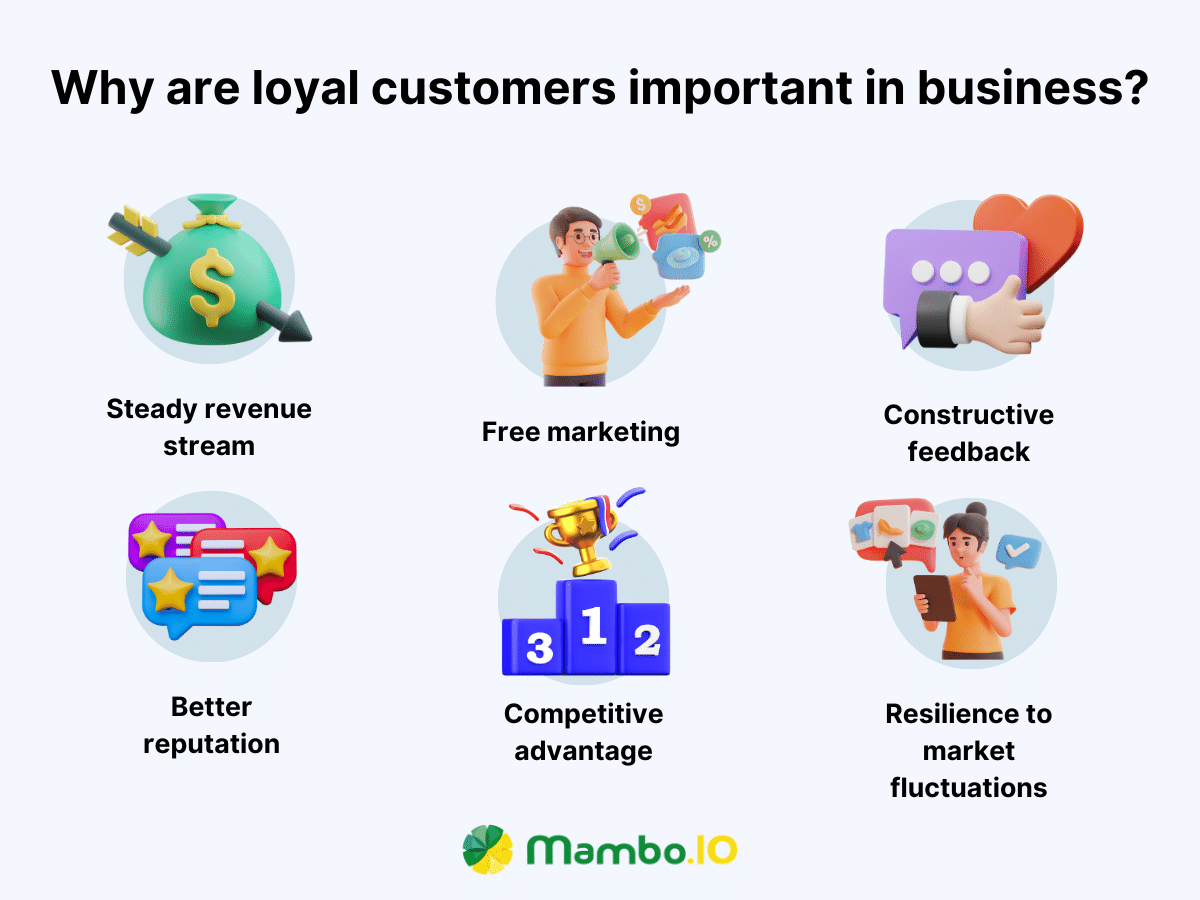
Yes, old is gold. Undoubtedly, having a tool to make existing clients click with your brand is invaluable. Communicating gratitude for your customer’s business through small, tangible rewards and positive incentives will only benefit your connection and relationship with them.
Conclusion
Times have changed, and so have people and the businesses they interact with. Organisations nowadays are utilising gamification in business more effectively to their advantages. Engagement and performance have also become a top priority for growing companies.
Let’s not forget how retaining and training talent saves money. Not only that, engaging and motivating employees increases performance and generates more value with the same resources. But for all this, you’ll need a customised 360-degree gamification solution to see positive changes and results throughout your organisation.
Mambo’s Gamification Software provides all the tools needed for engagement and performance in your business. It delivers a complete package structured to engage your employees, customers, learners and fans.
With the Mambo Gamification Platform, work has never been so much fun! Let’s have a discovery discussion about your gamification needs and how we can help you meet them.
Latest Posts
Machine Learning In Finance: 12 Essential Applications
The impact of machine learning on finance is significant. Thanks to this technology, financial institutions are now equipped to make efficient decisions. Through the analysis of data sets, machine learning […]
How To Create Interactive Compliance Training For Bank Employees
Banking compliance training isn’t just another task. It’s the stage where everything else performs. Banks must navigate a myriad of regulations and laws. After all, this is a trust-driven, high-stakes […]
How Fintech Apps Are Using Gamification To Increase User Engagement
Discover how gamification in fintech is revolutionizing financial engagement, making banking fun & boosting user loyalty.
